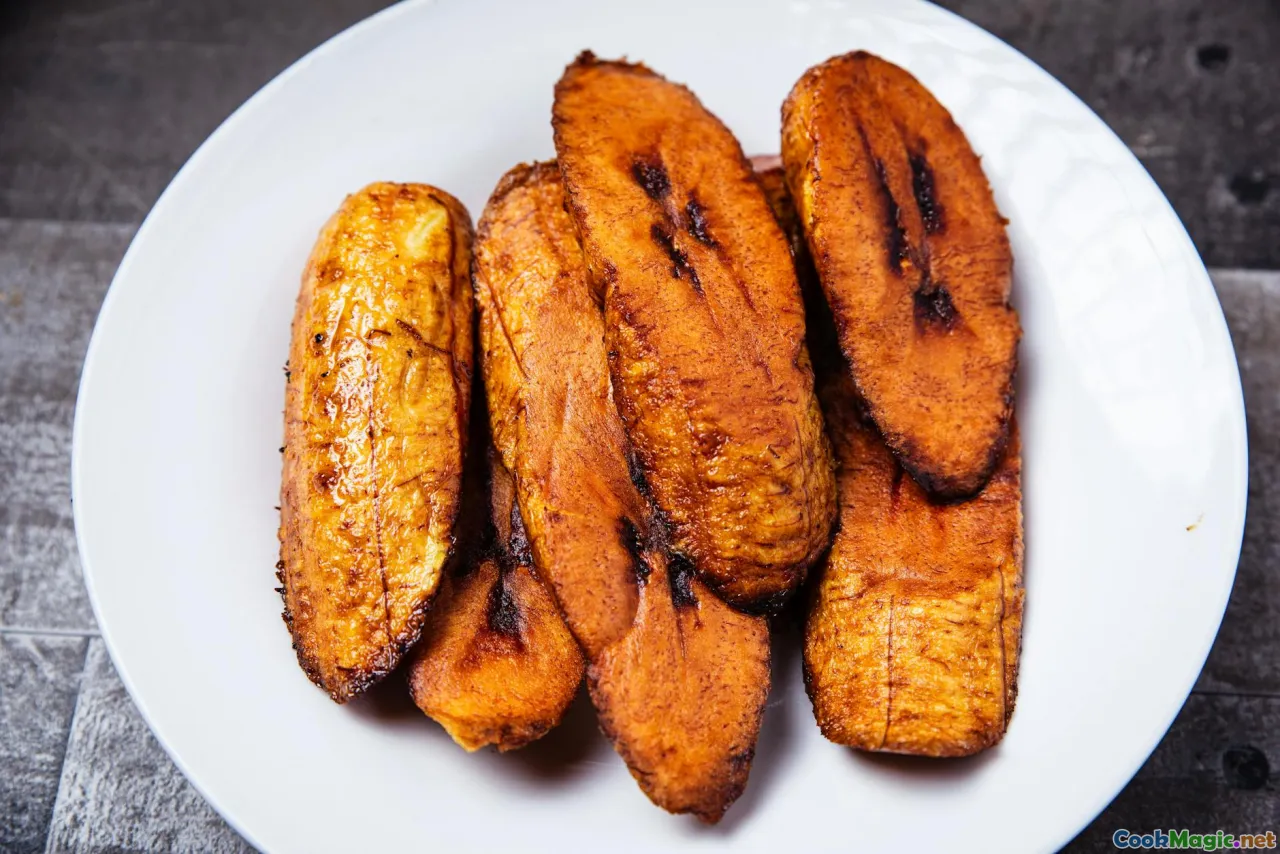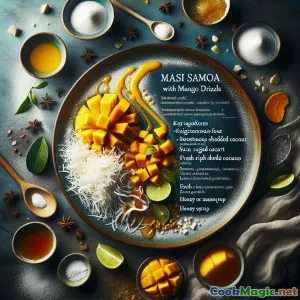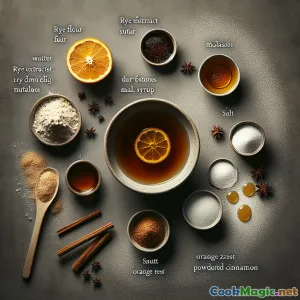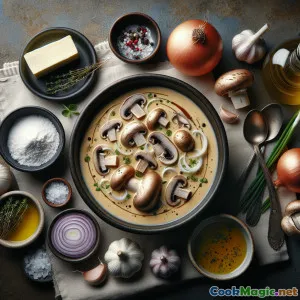Exploring Metemgee A One Pot Guyanese Classic
9 min read Discover the rich flavors and cultural significance of Metemgee, a hearty one-pot Guyanese stew that embodies the soul of Caribbean comfort food. May 22, 2025 03:00
Exploring Metemgee: A One Pot Guyanese Classic
Introduction: A Warm Invitation into Guyanese Culinary Heritage
Imagine walking into a bustling kitchen in the heart of Georgetown, where the aroma of spices, fresh herbs, and simmering ingredients beckon you with an irresistible embrace. It’s a familiar scene, one that speaks to the soul of Guyanese families—where food is more than just sustenance; it’s a celebration of history, community, and resilience.
One dish stands out as a quintessential emblem of this vibrant culture: Metemgee. This humble, yet profoundly flavorful stew encapsulates the rich tapestry of Guyana’s diverse influences—from Indigenous traditions to African, Indian, and European culinary heritages. It’s a one-pot wonder that has nourished generations, bringing people together around a steaming bowl of comfort.
In this article, we’ll embark on a flavorful journey through the history, cultural significance, and culinary artistry of Metemgee. Whether you’re a seasoned chef or a curious food lover, prepare to be immersed in the sensory delight that is Guyana’s beloved classic.
The Cultural Tapestry of Guyana and the Birth of Metemgee
A Melting Pot of Influences
Guyana’s history is a complex mosaic of peoples and cultures. Originally inhabited by Indigenous peoples, the land saw waves of colonization by the Dutch, French, and British, alongside the forced migration of African slaves and Indian indentured laborers. This melting pot gave rise to a unique culinary tradition—an eclectic blend of flavors, ingredients, and cooking techniques.
Metemgee, often called Guyana’s 'comfort food,' reflects this diversity. Its roots are deeply embedded in the African and Indigenous communities, where slow-cooked stews using local ingredients created hearty meals that sustained communities through harsh conditions.
The Name and Origins
The word "Metemgee" is believed to derive from indigenous or African linguistic origins, though its exact etymology remains a subject of local lore and speculation. What is certain is that it has been a staple in Guyanese households for generations, passed down through oral traditions and family recipes.
A Dish for Every Occasion
Metemgee isn’t just everyday fare; it’s a dish that marks special occasions, family gatherings, and communal celebrations. Its versatility allows it to be adapted with seasonal ingredients, making each version unique and personal.
The Ingredients: A Symphony of Flavors and Textures
The Base: Coconut Milk and Root Vegetables
At its core, Metemgee is a rich, creamy stew built around copious amounts of coconut milk, which imparts a subtle sweetness and velvety texture. The coconut milk blends harmoniously with starchy root vegetables—cassava, sweet potatoes, and yams—that form the hearty foundation of the dish.
The Protein: Fish, Chicken, or Beef
While traditionally made with salted fish or fresh local fish like tilapia, variations include chicken or beef, slow-cooked until tender, absorbing the flavors of the stew. The choice of protein often reflects regional preferences or what’s available.
Aromatics and Spices
A medley of aromatics elevates Metemgee’s flavor profile. Onions, garlic, and ginger are fundamental, providing warmth and depth. Additional notes of thyme, scotch bonnet peppers (for a gentle heat), and bay leaves lend complexity.
Vegetables and Herbs
Green plantains, chayote, and occasional additions like pumpkin or callaloo greens introduce additional layers of texture and taste. Fresh herbs—cilantro and chadon beni (culantro)—are added just before serving for a burst of freshness.
The Cooking Technique: Slow and Steady
Preparing the Ingredients
The process begins with peeling and chopping root vegetables into uniform pieces for even cooking. Salted fish (if used) is soaked to remove excess salt and flaked into the stew.
Building the Flavors
A large, heavy-bottomed pot is heated with oil, and aromatics are sautéed until fragrant. Coconut milk and water are added, along with the vegetables and proteins. The stew is then simmered gently for at least an hour—sometimes longer—to allow flavors to meld.
The Magic of Stewing
Patience is key. The slow simmering breaks down the vegetables, thickens the coconut milk, and infuses every ingredient with a rich, cohesive flavor. The result is a thick, aromatic stew with a luscious, soupy consistency.
The Sensory Experience: Taste, Smell, and Texture
Visual Appeal
A steaming bowl of Metemgee glows with a creamy, off-white hue, contrasted by the vibrant green herbs and fiery scotch bonnet pepper bits. The assorted root vegetables break the surface like colorful jewels—orange sweet potatoes, white cassava, and purple yam.
Aromatic Allure
The scent is intoxicating—a combination of coconut sweetness, earthiness from the root vegetables, and a spicy kick from the peppers. The aroma alone can evoke feelings of warmth and nostalgia.
Taste and Texture
The first spoonful delivers a complex flavor profile: the richness of coconut, the savory saltiness of fish or meat, and the subtle heat of peppers. The texture is a delightful contrast—creamy broth, tender chunks of vegetables, and succulent proteins. Each bite feels like a comforting hug.
Personal Reflection
For me, eating Metemgee is like reconnecting with my roots. It’s the taste of family gatherings, the scent of my grandmother’s kitchen, and a reminder of the resilience and unity that define Guyanese culture.
Variations and Modern Twists
While traditional Metemgee remains beloved, contemporary cooks experiment with variations:
- Vegan versions using plant-based proteins and more vegetables.
- Incorporation of modern spices like cumin or turmeric for added depth.
- Serving alongside rice or bread to soak up the flavorful stew.
- Fusion styles, blending Guyanese flavors with other Caribbean or international influences.
Conclusion: A Dish That Celebrates Heritage and Heart
Metemgee is more than just a dish; it’s a narrative of a people’s history, resilience, and communal spirit. Its hearty, wholesome nature makes it a perfect example of how simple ingredients, when combined with patience and love, create something profoundly impactful.
Whether you’re cooking it for a family gathering, sharing it with friends, or simply indulging in a moment of culinary nostalgia, Metemgee offers a taste of Guyana’s soul—rich, warm, and endlessly inviting. So, gather your ingredients, embrace the slow simmer, and let this one-pot wonder tell its story on your table.
Happy cooking and even happier eating!









